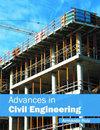利用地理信息系统和双变量统计模型绘制埃塞俄比亚 Chemoga 流域的滑坡易发性地图
IF 1.6
4区 工程技术
Q3 CONSTRUCTION & BUILDING TECHNOLOGY
引用次数: 0
摘要
本研究旨在利用地理信息系统(GIS)和双变量统计模型绘制埃塞俄比亚 Chemoga 流域的滑坡易发性地图。根据谷歌地球图像和实地调查,确定了约 169 个滑坡地点,并将其随机分类为训练数据集(70%)和测试数据集(30%)。将坡度、海拔、坡向、曲率、地形湿润指数、归一化差异植被指数、道路、河流、土地利用、降雨量和岩性等 11 个滑坡条件因子与训练滑坡点进行整合,利用频率比(FR)和信息值(IV)模型确定每个因子和因子类别的权重。最终的滑坡易发性图被分为五个等级:极低、低、中、高和极高。曲线下面积(AUC)精度模型的结果显示,频率比模型和信息值模型的成功率分别为 87.00% 和 90.10%,预测率分别为 88.00% 和 92.30%。此类研究将对地方政府未来规划和决定滑坡缓解计划非常有用。本文章由计算机程序翻译,如有差异,请以英文原文为准。
Landslide Susceptibility Mapping Using GIS and Bivariate Statistical Models in Chemoga Watershed, Ethiopia
This study aimed to map the landslide susceptibility in the Chemoga watershed, Ethiopia, using Geographic Information System (GIS) and bivariate statistical models. Based on Google earth imagery and field survey, about 169 landslide locations were identified and classified randomly into training datasets (70%) and test datasets (30%). Eleven landslides conditioning factors, including slope, elevation, aspect, curvature, topographic wetness index, normalized difference vegetation index, road, river, land use, rainfall, and lithology were integrated with training landslides to determine the weights of each factor and factor classes using both frequency ratio (FR) and information value (IV) models. The final landslide susceptibility map was classified into five classes: very low, low, moderate, high, and very high. The results of area under the curve (AUC) accuracy models showed that the success rates of the FR and IV models were 87.00% and 90.10%, while the prediction rates were 88.00% and 92.30%, respectively. This type of study will be very useful to the local government for future planning and decision on landslide mitigation plans.
求助全文
通过发布文献求助,成功后即可免费获取论文全文。
去求助
来源期刊

Advances in Civil Engineering
Engineering-Civil and Structural Engineering
CiteScore
4.00
自引率
5.60%
发文量
612
审稿时长
15 weeks
期刊介绍:
Advances in Civil Engineering publishes papers in all areas of civil engineering. The journal welcomes submissions across a range of disciplines, and publishes both theoretical and practical studies. Contributions from academia and from industry are equally encouraged.
Subject areas include (but are by no means limited to):
-Structural mechanics and engineering-
Structural design and construction management-
Structural analysis and computational mechanics-
Construction technology and implementation-
Construction materials design and engineering-
Highway and transport engineering-
Bridge and tunnel engineering-
Municipal and urban engineering-
Coastal, harbour and offshore engineering--
Geotechnical and earthquake engineering
Engineering for water, waste, energy, and environmental applications-
Hydraulic engineering and fluid mechanics-
Surveying, monitoring, and control systems in construction-
Health and safety in a civil engineering setting.
Advances in Civil Engineering also publishes focused review articles that examine the state of the art, identify emerging trends, and suggest future directions for developing fields.
 求助内容:
求助内容: 应助结果提醒方式:
应助结果提醒方式:


